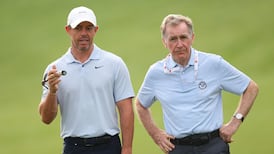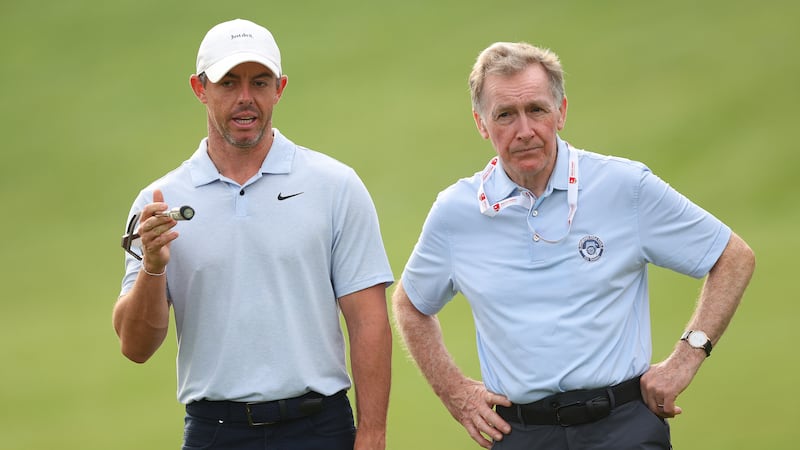On the range before his second round in this 114th edition of the US Open, Martin Kaymer sported the gadget which has made him and nowadays defines him. It doesn't belong to rocket science. Nor is it a hi-tech device. If anything, it is the opposite; and nothing that would appeal to golfing nerds.
Around his neck, dangling down to his chest, the German wears a string with a tennis ball attached. It is, in many ways, the secret to his success; his recent success, at least.
As clinical as Kaymer has been for the opening two rounds of this US Open, his rebirth goes back a number of years. It has been pursued with a similarly clinical obsession, even when negative thoughts were thrust into his mindset by those who doubted the direction he was headed. Invariably, that negativity had him expelled to the wilderness.
Number one
Let’s think back to when he was king. In 2010, Kaymer won the US PGA championship at Whistling Straits (yes, that one, where
Dustin Johnson
grounded his club in a waste area that proved to be a bunker!) and would go on to become the world number one ranked player. In 2011, he won the Abu Dhabi championship and the
HSBC
Champions tournament.
But it was then that Kaymer decided that he needed to change his swing, that his game was not sufficiently good, that it needed a dramatic overhaul.
Rather than have a one-dimensional fade, Kaymer wanted to be able to shape the ball both ways. To draw. And to fade. His coach, Gunter Kessler, oversaw the change. The plan was to do it quickly and efficiently. But it went on much longer than either anticipated. The process was not a matter of weeks, nor months. It took three years.
Forgotten men
And, for much of that time, Kaymer became one of golf’s many forgotten men. Only rarely did he break out. In the Ryder Cup at Medinah in 2012, he holed the putt that secured the famous trophy for
Europe
. And he would win the Nedbank Golf Challenge in Sun City, after which he slipped back into the shadows and only re-emerged – his swing now as he wanted – in winning the Players championship last month. Now this.
Why would a Major winner and former world number one go to such extremes?
It would seem the inclination to tinker is in most golfers, not just Pádraig Harrington.
Kaymer made the decision to reconstruct his swing because he felt he was limited in only hitting fade shots. To make an even greater, long-term impact, to become a great, he believed he needed to hit fade shots and draw shots with equal levels of comfort.
As he put it: “I can hit any shape shot now. Before, I could only hit a fade. It was a very safe, secure swing but you have to hit different shots out here (on tour). I am a lot better than I was two or three years ago. I feel more confident.”
There were times in the process when Kaymer's confidence hit the depths. "It (wasn't) one specific thing, it's just that you read over and over in the newspapers, on Facebook, on golf websites, is he ever going to come back? Is he a one-hit wonder with a Major win? It's not nice to read, but I can understand why people think like this. It is quite normal."
The lowest ebb came in the run-up to the Ryder Cup at Medinah. Kaymer, kick-started by a massive haul of points collected from that HSBC Champions win in late-2011, somehow made the team off the qualifying table. “I wouldn’t have put myself on the team. I just qualified, that’s why I was on the team, but I would have never deserved a wild card,” he said.
Defining moment
As it transpired, he became a key player. He sank the putt that retained the trophy for Europe. It was a defining moment, but could so easily have gone the other way. As he knows only too well.
Of that putt on the 18th green at Medinah, Kaymer remarked: “A lot of people don’t realise that it can change a career, things like this. If you think about it in the negative way and think about if I would have missed the putt, it could break an athlete. I’m very happy I didn’t think about it while I was standing over that putt, but its quite important to realise both sides…. so Medinah made a very big difference for me in the way of confidence, that I can make those important putts when it really matters.”
He kicked on.
Kaymer, now, will tell you that he never doubted the process. That he knew there would always be light at the end of the tunnel. “I was very secure about myself. I knew what I am doing. I had a lot of trust in the people that I work with, and there was never any stress . . . . ”
No lows here at Pinehurst, at least so far, where Kaymer – in shooting back-to-back 65s for a midway total of 130, a record 36-hole aggregate for the US Open – has been cool, calm, collected and brutally clinical.
German efficiency as its finest.
















